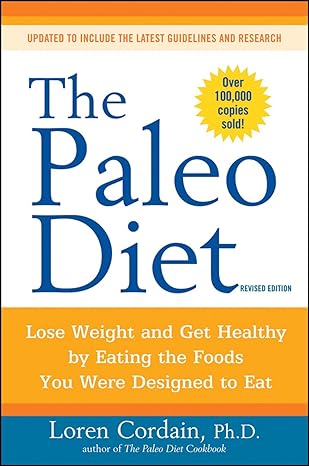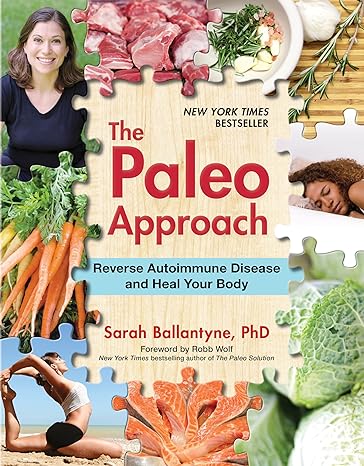You hear a lot of claims about it, but does the Paleo Diet work for losing weight?
The Paleo diet, short for Paleolithic diet and also known as the Keto Diet, has gained significant popularity in recent years as a nutritional approach that mimics the dietary patterns of our prehistoric ancestors. The core principle behind the Paleo diet is to eat foods that our hunter-gatherer ancestors would have consumed during the Paleolithic era, which dates back to about 2.5 million to 10,000 years ago. Advocates of the Paleo diet believe that by adhering to this ancestral eating pattern, individuals can achieve numerous health benefits. Here’s an exploration of why the Paleo diet works and its underlying mechanisms.
Evolutionary Perspective
The primary rationale behind the Paleo diet’s effectiveness lies in its alignment with our evolutionary history. Proponents argue that the human genome has undergone minimal changes since the Paleolithic era, and our bodies are genetically adapted to the types of foods available during that time. The agricultural revolution, which introduced grains and legumes, occurred relatively recently in human history. Therefore, the Paleo diet emphasizes the consumption of foods such as lean meats, fish, fruits, vegetables, nuts, and seeds, which were staples for our ancestors.
Nutrient Density
One key aspect of the Paleo diet is its focus on nutrient-dense foods. Meats, especially lean cuts, are rich in protein, a crucial macronutrient for muscle development, repair, and overall cellular function. Fruits and vegetables provide essential vitamins, minerals, and antioxidants that support various bodily functions, including immune health and oxidative stress reduction. Nuts and seeds contribute healthy fats, such as omega-3 fatty acids, which are beneficial for heart health and cognitive function.
Elimination of Processed Foods
The Paleo diet emphasizes the exclusion of processed and refined foods, including sugar, refined grains, and industrial seed oils. These modern additions to the human diet have been linked to various health issues, including obesity, type 2 diabetes, and cardiovascular diseases. By eliminating processed foods, the Paleo diet aims to reduce the intake of added sugars and unhealthy fats, promoting better metabolic health and weight management.
Blood Sugar Regulation
Another factor contributing to the effectiveness of the Paleo diet is its potential to regulate blood sugar levels. The diet’s emphasis on whole foods with a low glycemic index may help stabilize blood sugar, reducing the risk of insulin resistance and type 2 diabetes. The avoidance of refined carbohydrates also prevents rapid spikes and crashes in blood sugar, promoting sustained energy levels throughout the day.
Inflammation Reduction
Chronic inflammation is implicated in the development of various diseases, including autoimmune conditions and cardiovascular disorders. The Paleo diet, rich in anti-inflammatory foods such as fatty fish and fruits high in antioxidants, may help reduce systemic inflammation. Additionally, the exclusion of grains containing gluten may benefit individuals sensitive to gluten, further mitigating inflammation.
Gut Health Improvement
The Paleo diet advocates the consumption of fibrous fruits and vegetables, which are essential for maintaining a healthy gut microbiome. A diverse and balanced microbiome is associated with improved digestion, nutrient absorption, and immune function. By promoting a diet that supports beneficial gut bacteria, the Paleo approach may contribute to overall gastrointestinal health.
Satiety and Weight Management
The Paleo diet’s emphasis on protein and fiber-rich foods can enhance feelings of satiety, potentially reducing overall calorie intake. Increased protein intake is associated with greater thermogenesis, meaning the body expends more energy digesting and metabolizing protein compared to fats and carbohydrates. This, coupled with the nutrient-dense nature of Paleo foods, may contribute to effective weight management.
A quick search online displays many before and after stories of dieters who have lost from 10 to 200 pounds moving to a Paleo diet. Ultimately, individual factors like starting weight, adherence, and overall lifestyle significantly impact results. Consulting a healthcare professional before embarking on any dietary changes is crucial, especially for those with underlying health conditions.
Great Starting Points
- Download this free ebook of Deliciously Easy Keto Recipes. DOWNLOAD NOW
- Learn what to eat to lose fat and get healthy without giving up your favorite foods or starving yourself, with a CUSTOM KETO DIET PLAN.
Best Selling Books
These books might also help you on your journey toward health through a Paleo Diet.





















